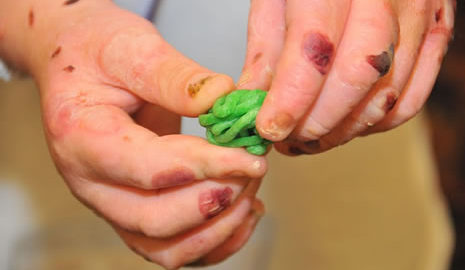Canadian Teenager Battling Aggressive Skin Disease

Jonathan Pitre, 16, has epidermolysis bullosa, a rare genetic disorder of connective tissue that causes the skin to be extremely fragile and prone to tears and blisters from minor trauma and friction. About 200 children are born with this condition in the United States every year. They are sometimes referred to as butterfly children on account of their fragile skin. There is no treatment or cure for this painful and debilitating disease. Patients must learn to manage the pain and use protective bandaging for wound care.
Stem Cell Transplant for Epidermolysis Bullosa
Stem cell transplant for epidermolysis bullosa involves replacing unhealthy cells in the bone marrow of a patient with healthy cells from a donor. In Pitre’s case, blood and marrow were drawn from his mother’s hip with the hope that the stem cells in her blood would colonize his marrow and alter the course of his disease.
The bone marrow is a soft, spongy tissue in the interior of bones that contains hematopoietic stem cells, i.e., stem cells that can differentiate into blood cells. Intense chemoradiotherapy is used to kill the patient’s own stem cells, followed by transplantation of donor stem cells, which hopefully will grow and provide a supply of healthy blood cells.
Complications of Stem Cell Transplantation for EB
Pitre’s immune system has been wiped out by the effects of high-dose chemoradiotherapy. Doctors will know after several weeks if the procedure was a success. Meanwhile, the teenager is at high risk of infections and GVHD (graft-versus-host disease) if the donor stem cells develop into T-cells and attack normal cells.
It takes about two weeks for the donor cells to firmly establish themselves in the patient’s marrow. The presence of immunity-providing white cells in Pitre’s circulation will indicate that the transplanted stem cells are working. Any improvement in his skin condition will also be a signal that the procedure is a success.
Pitre had previously undergone a stem cell transplant which failed when his own stem cells re-colonized his marrow. This time, it is Pitre and his doctors’ hope that his mother’s stem cells will grow in his body, divide, and make healthy blood cells that will contain the protein he needs to rebuild damaged skin.
References:
1. http://ottawacitizen.com/news/local-news/his-stem-cell-transplant-complete-the-wait-begins-for-jonathan-pitre


